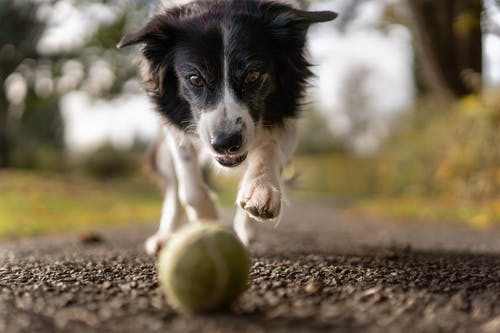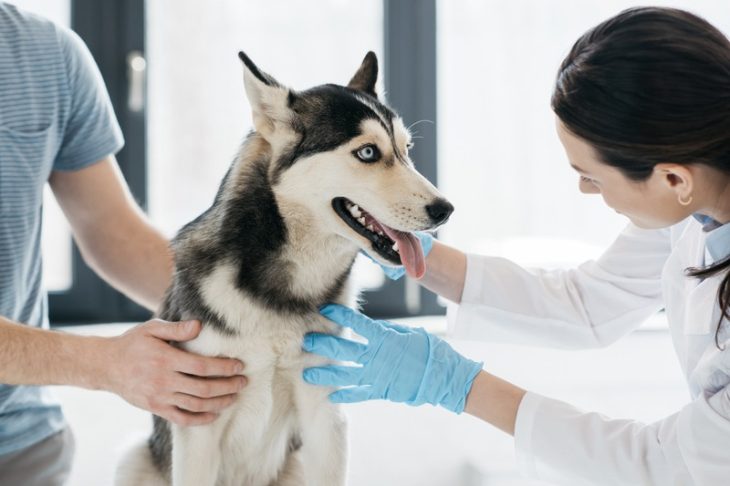Parvovirus is a highly contagious and life-threatening viral disease that affects our dogs, causing acute gastrointestinal illness and, in some cases, heart muscle inflammation. Understanding the science behind this virus, its transmission, symptoms, and prevention methods is crucial for pet owners to protect their furry friends from this deadly illness.
This article will dive deep into the complex world of canine parvovirus and discuss how to safeguard our pets from this dangerous threat.
Understanding Canine Parvovirus (CPV)
Parvo in Dogs: An Overview
Canine parvovirus, or CPV, is primarily known for causing acute gastrointestinal illness in pups, with those between six to 20 weeks old being the most susceptible to infection. In rare cases, very young (neonatal) puppies may also develop myocarditis, an heart muscle inflammation.
The Origin of Canine Parvovirus Type 2 (CPV-2)
Tracing its origin back to Europe in 1976, CPV-2 swiftly spread across the globe, leading to a worldwide epidemic of myocarditis and gastroenteritis. It is closely related to the feline panleukopenia virus (FPV), which was first identified in the 1920s and is known to affect cats, mink, and other animals. The shift to affect dogs occurred due to two or three genetic mutations in FPV, enabling it to expand its host range and infect our canine companions.
Transmission and Infection Process
How Dogs Become Infected
Canine parvovirus can be found nearly everywhere, yet not all dogs who come into contact with it become infected. The immune status of the dog and the number of virus particles they are exposed to are critical factors determining the likelihood of infection. If a dog does become infected, a specific sequence of events unfolds as the virus wreaks havoc on the body.
The Infection Process in Detail
Following infection, there is an incubation period of three to seven days before symptoms appear. CPV needs rapidly dividing cells to thrive, with its initial targets being the tonsils or lymph nodes of the throat. Once inside the lymph nodes, the virus invades lymphocytes (a type of white blood cell) for one or two days, reproducing itself. Using the lymphocytes as a shield, the virus enters the bloodstream.
Many of these CPV-infected lymphocytes end up dying, resulting in a reduction in the number of circulating lymphocytes, a condition called lymphopenia. In the bloodstream, the virus targets rapidly dividing cells, particularly in the bone marrow and the cells lining the walls of the small intestines. In very young dogs, CPV can also infect the heart, leading to heart muscle inflammation and irregular heartbeats.
Symptoms and Complications of Canine Parvovirus
Common Symptoms
CPV-infected dogs often exhibit lethargy, depression, and diminished appetite, followed by a sudden onset of high fever, vomiting, and diarrhea. Keep in mind that if your dog experiences bloody diarrhea and vomiting, CPV is only one of many possible causes. Consult your veterinarian for tests to determine if your pet is infected.
Pet Vaccination and Parvovirus
Administering proper pet vaccination is crucial for safeguarding our pets from various dangerous diseases, including CPV. Pet owners must also remember that cat vaccinations are equally essential to ensure their feline friends stay healthy.
Diagnosis and Tests for Canine Parvovirus
The most common method to test for CPV is the fecal ELISA test, which uses antibodies to detect the presence of the virus in the stool. While reasonably accurate, this test can occasionally produce false positive or false negative results, necessitating further tests for confirmation. Another diagnostic technique utilizes polymerase chain reaction (PCR) to detect CPV-specific viral DNA in fecal samples.
This method is more accurate than the fecal ELISA test, but it requires sending a sample to a laboratory specializing in PCR-based testing, thus taking more time. A simple measure of white blood cell count measure is often used to confirm CPV diagnosis, as a low count can indicate infection.
Vet Surgery and Parvovirus
In some cases, more severe complications may arise, and vet surgery might be necessary to ensure the pet’s survival. For residents of North Carolina, seeking veterinary surgery in Huntersville is a wise choice for accessing top-notch care for their pets in need of medical interventions.
Treatment Options for Dogs with Canine Parvovirus
Supportive Care and Symptom Management
Treatment for dogs suffering from CPV revolves around supportive care and managing the symptoms. A hospital stay is typically required to help the infected dog receive intravenous fluids and nutrients, replacing the enormous amounts lost through vomiting and diarrhea. Blood transfusions might also be utilized to boost low blood cell counts stemming from CPV’s attack on the bone marrow.
Antibiotics and Medications
Administering antibiotics intravenously or via injections can help combat the infection, especially when intestinal bacteria have entered the bloodstream. Additionally, medications to control nausea and diarrhea may be beneficial. If medical intervention is provided promptly, many dogs recover from the infection and develop lifelong immunity against that specific strain.
Senior Pet Care and Parvovirus
Taking care of our senior pets is essential to ensure their health and well-being. Awareness of the dangers of parvovirus is vital, and taking action to prevent its spread is necessary for all dogs, including senior pets. For comprehensive information on senior pet care, visit this page to learn more about how to keep your older pets healthy and happy.
Prevention of Canine Parvovirus
Vaccination for CPV
With the introduction of effective canine vaccinations, parvovirus has become less of a threat. However, it remains a serious issue, and vaccination should not be considered optional. Veterinarians generally administer CPV vaccines in combination with other vaccines, such as distemper, canine adenovirus, and parainfluenza. These shots are given every 3 to 4 weeks from the time a puppy is six weeks old until they are at least 16 weeks of age, with booster vaccinations recommended yearly and then every three years after that.
Environmental Prevention
Considering the resilience of parvovirus, isolating infected dogs to halt its spread is crucial. Disinfecting contaminated areas with a bleach solution can help reduce the risk of transmission to other pets. It is essential to keep your puppy away from public places with high virus concentrations, such as animal shelters and kennels until their vaccinations are complete.
The Takeaway
Understanding the science behind parvovirus and being proactive about vaccination and prevention is critical to protecting our pets from this deadly disease. By staying informed and taking the necessary steps, we can contribute to our furry friend’s overall health and happiness, ensuring they live long, healthy lives.



